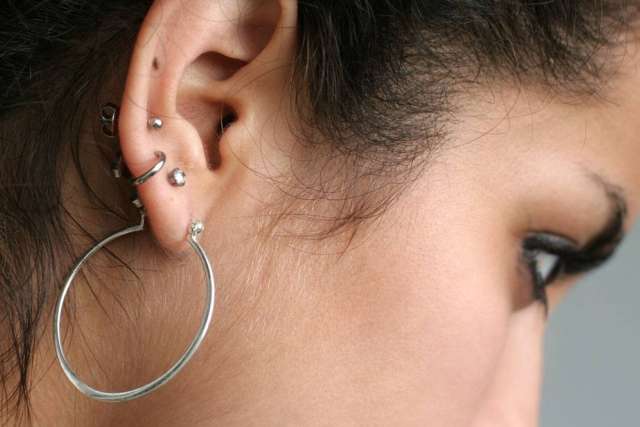Dear Doctor: A few weeks after I got my ears pierced, my right ear lobe hurt a lot and got really itchy. It’s OK now, but my mom says that means it got infected. What do you think went wrong? I’m getting another piercing, and I don’t want to get another infection.
Dear Reader: We tend to focus on the jewelry that a piercing is going to display, but it’s also important to remember that you’re starting out with an open wound. Until the site is completely healed, you need to take precautions against infection. This is particularly true because the wound won’t be protected from the outside world by a bandage. In addition, it will contain a foreign object that can serve as a conduit for bacteria.
How long a piercing takes to heal depends upon where it’s located. A pierced earlobe, which is fatty tissue with good blood flow, takes about six to eight weeks. A piercing on the cartilage of the ear, which has no direct blood supply, can take from four months to a year to fully heal, depending on its location.
Always have any piercing done by an experienced professional. Check them out beforehand, and be sure to ask about their hygienic practices. Once the piercing is complete, you’ll keep your starter earrings in place, even at night, until the wound is completely healed. Changing them too soon can introduce bacteria or reinjure the wound, which will set back recovery several weeks.
It’s crucial that you always wash your hands before touching a new piercing. Don’t fuss with the earrings too much, as that can irritate the wound. Use swabs to gently clean both sides of the area several times a day with a mild antiseptic soap or a sterile saline solution. Avoid hydrogen peroxide or rubbing alcohol, as these can dry out and kill the healthy new cells, which slows the healing process. To prevent adhesion, you’ll turn the earrings a complete revolution a few times a day, preferably while the area is wet from cleaning.

Pain and slight itching are common soon after a new piercing. However, your mother is correct that the increased pain and persistent itchiness you experienced weeks later are often signs of infection. Additional symptoms include swelling, redness, crustiness, a visible puslike discharge and a sensation of heat. More serious infection can cause fever and a feeling of malaise.
If infection in an earlobe piercing is mild, it can often be treated at home. This includes the use of a warm compress, rinsing with sterile saline several times a day and giving healing a jump start with an antibiotic ointment on the affected area. If things don’t clear up in a few days, see your health care provider right away.
Complications can include developing an abscess, or an infection that becomes systemic. For more serious infections, you may be prescribed oral antibiotics. If infection develops in an upper ear piercing, which is in the cartilage, it is important to seek medical care right away.
(Send your questions to askthedoctors@mednet.ucla.edu, or write: Ask the Doctors, c/o UCLA Health Sciences Media Relations, 10960 Wilshire Blvd., Suite 1955, Los Angeles, CA 90025. Owing to the volume of mail, personal replies cannot be provided.)





